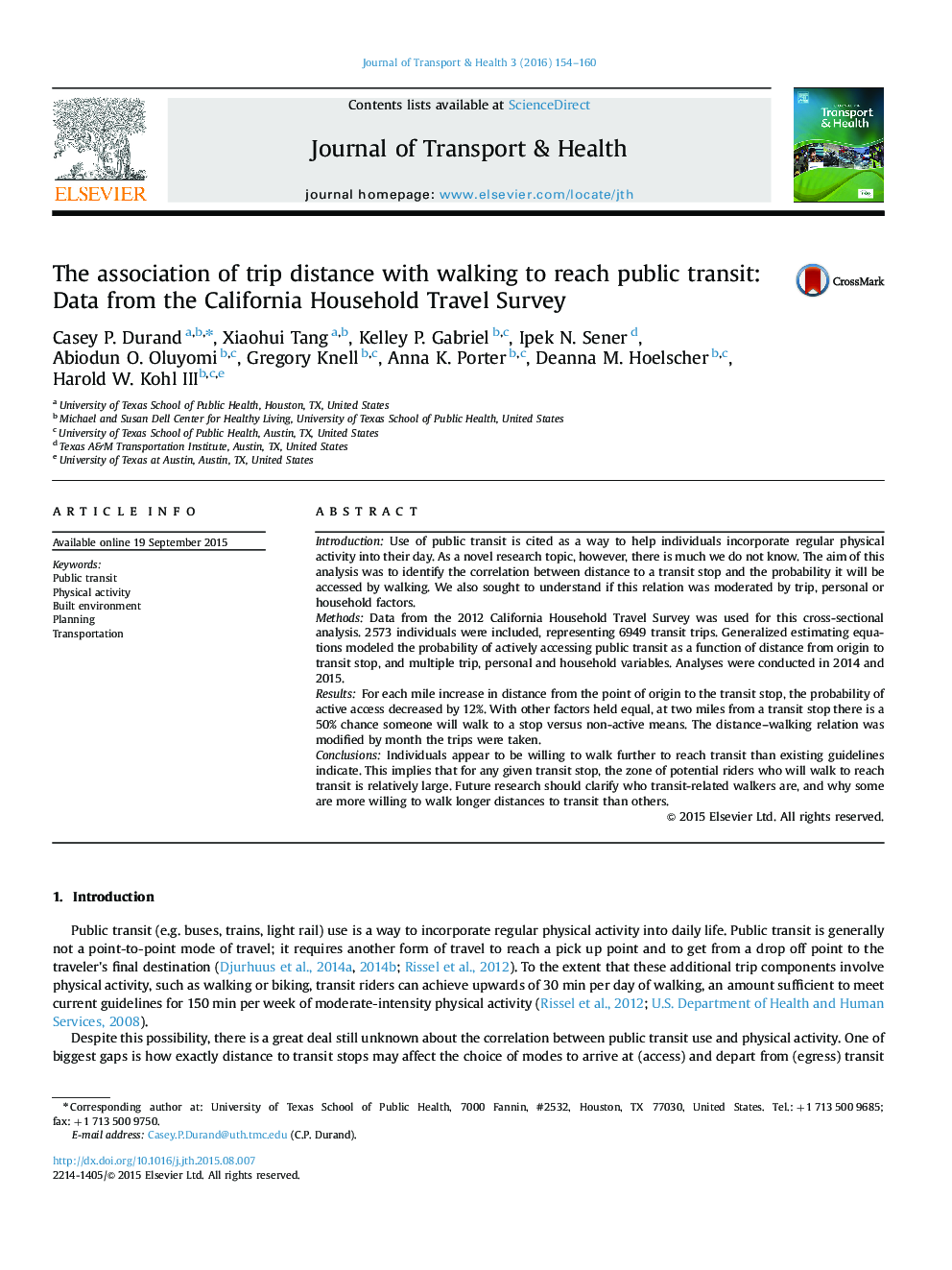| کد مقاله | کد نشریه | سال انتشار | مقاله انگلیسی | نسخه تمام متن |
|---|---|---|---|---|
| 5117818 | 1378138 | 2016 | 7 صفحه PDF | دانلود رایگان |

- Use of public transit is correlated with greater physical activity.
- The distance individuals are willing to walk to reach transit is uncertain.
- We found increasing distance is correlated with lower chance of walking to transit.
- However, individuals appear willing to walk further to transit than previously thought.
- This relation generally did not vary over key demographic or economic factors.
IntroductionUse of public transit is cited as a way to help individuals incorporate regular physical activity into their day. As a novel research topic, however, there is much we do not know. The aim of this analysis was to identify the correlation between distance to a transit stop and the probability it will be accessed by walking. We also sought to understand if this relation was moderated by trip, personal or household factors.MethodsData from the 2012 California Household Travel Survey was used for this cross-sectional analysis. 2573 individuals were included, representing 6949 transit trips. Generalized estimating equations modeled the probability of actively accessing public transit as a function of distance from origin to transit stop, and multiple trip, personal and household variables. Analyses were conducted in 2014 and 2015.ResultsFor each mile increase in distance from the point of origin to the transit stop, the probability of active access decreased by 12%. With other factors held equal, at two miles from a transit stop there is a 50% chance someone will walk to a stop versus non-active means. The distance-walking relation was modified by month the trips were taken.ConclusionsIndividuals appear to be willing to walk further to reach transit than existing guidelines indicate. This implies that for any given transit stop, the zone of potential riders who will walk to reach transit is relatively large. Future research should clarify who transit-related walkers are, and why some are more willing to walk longer distances to transit than others.
Journal: Journal of Transport & Health - Volume 3, Issue 2, June 2016, Pages 154-160